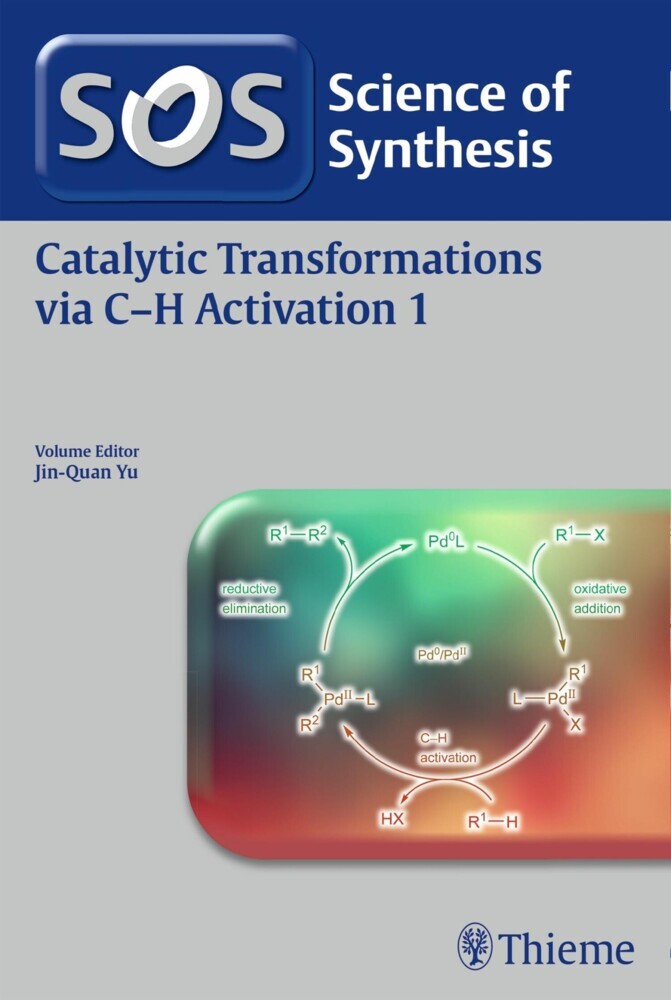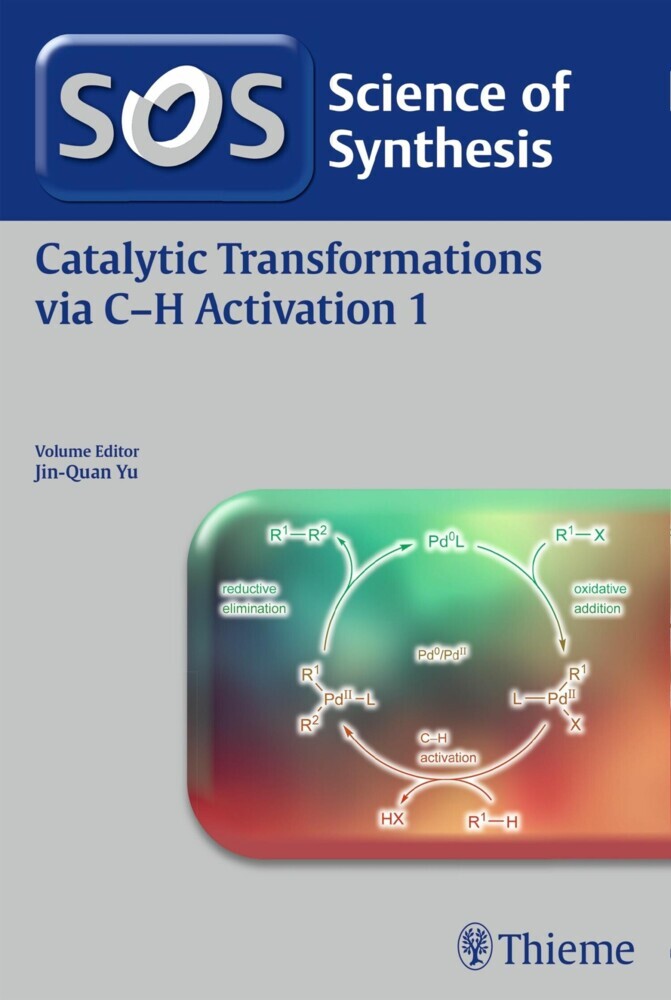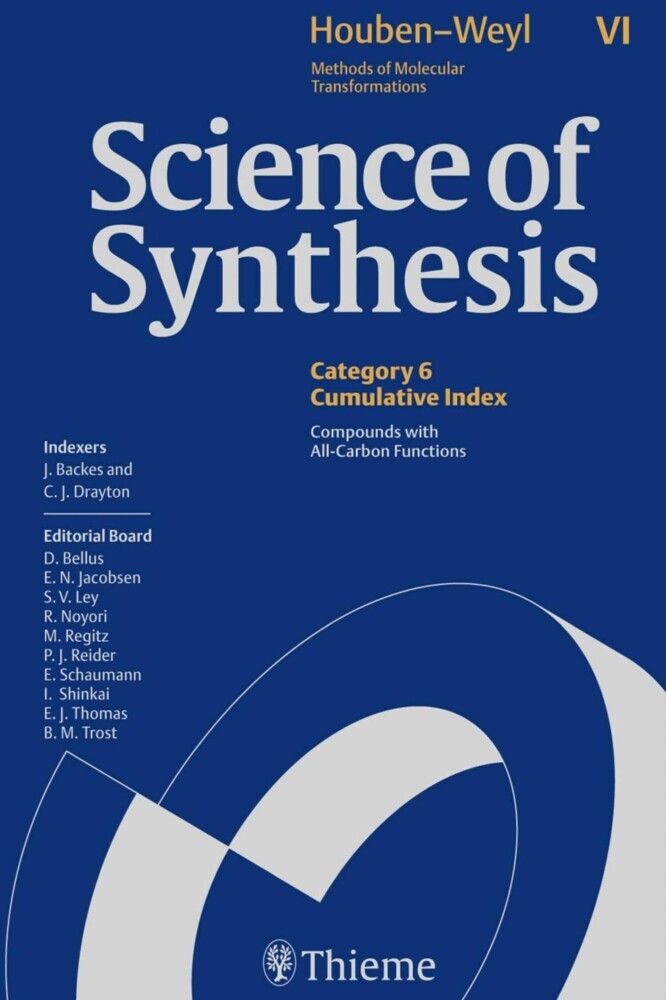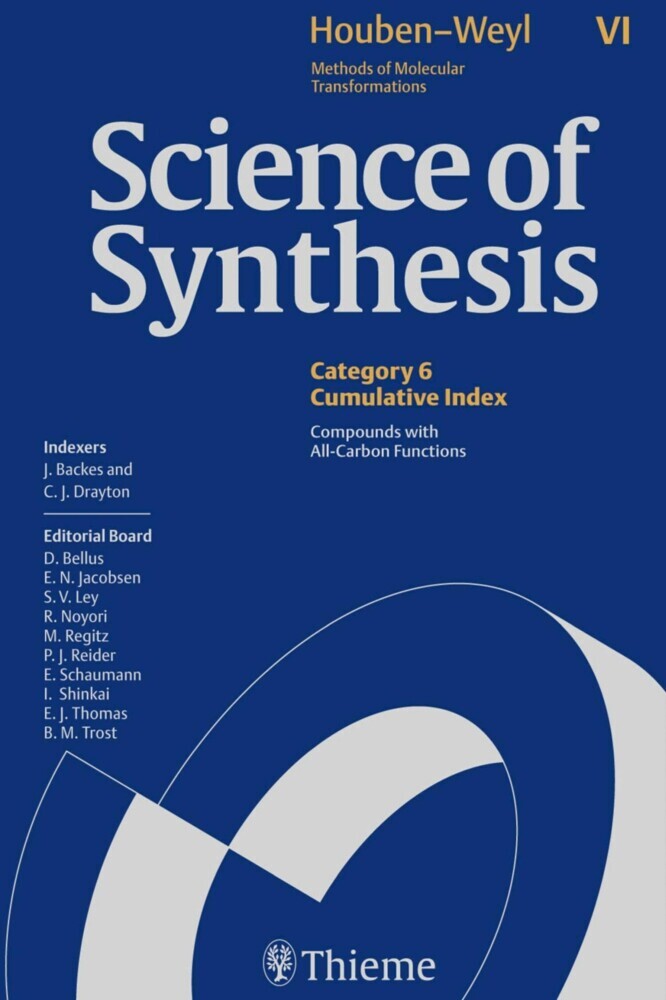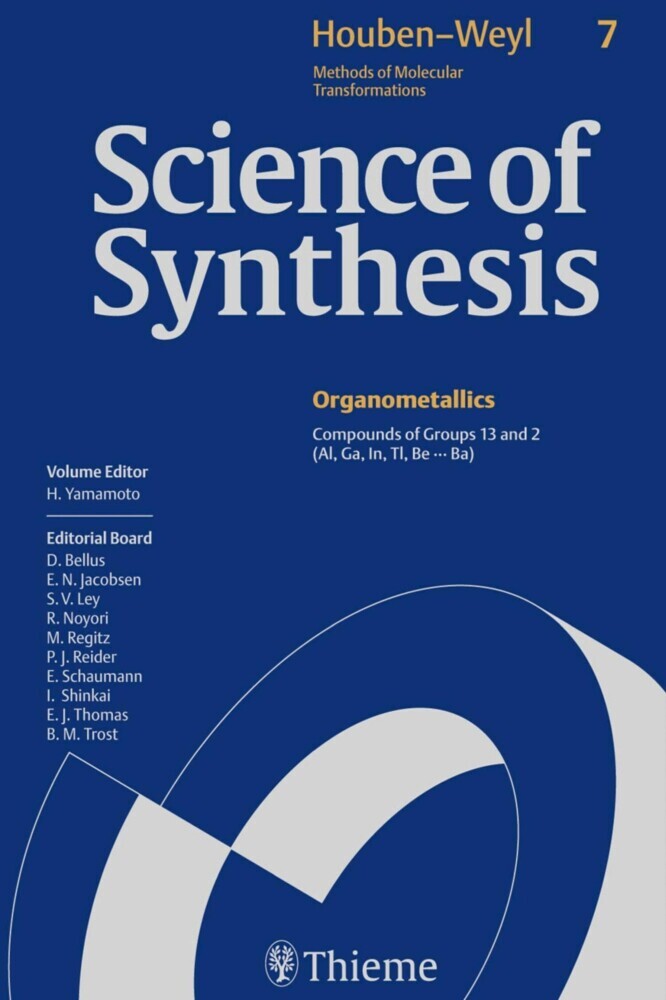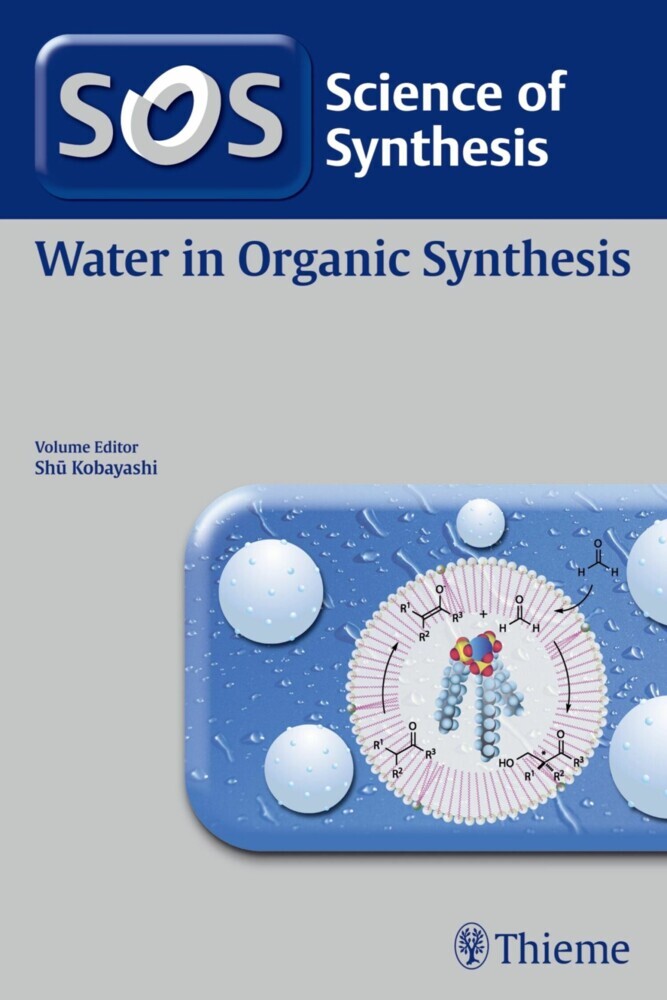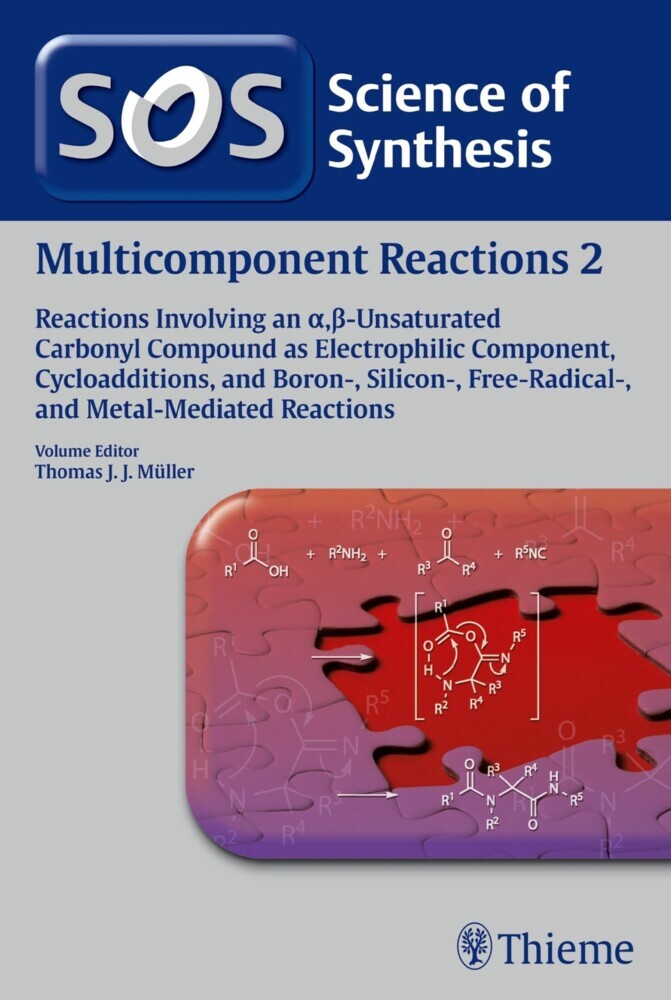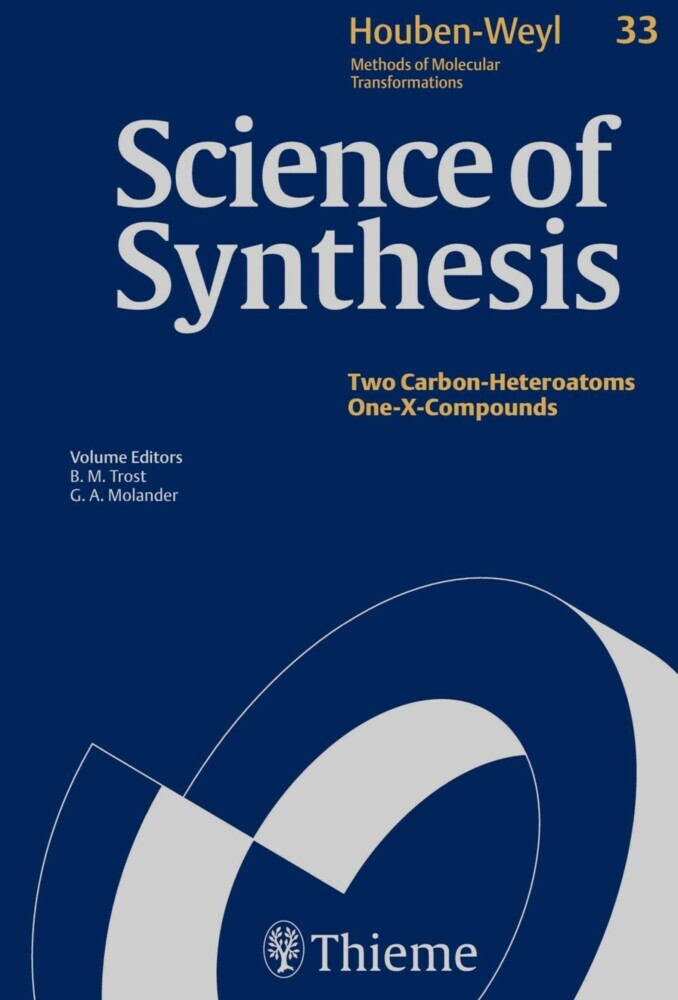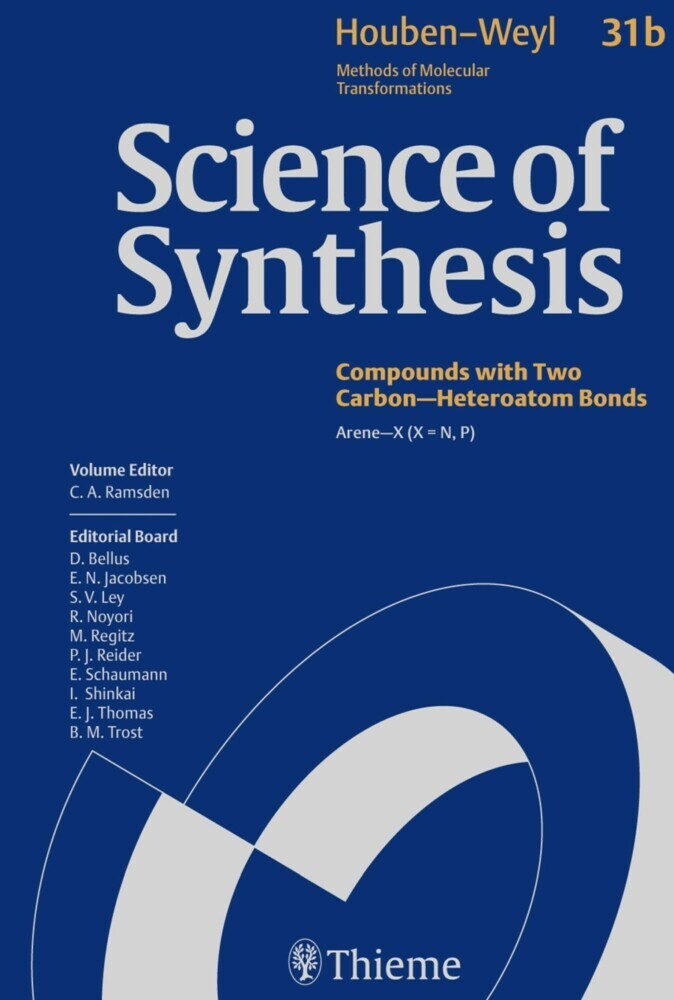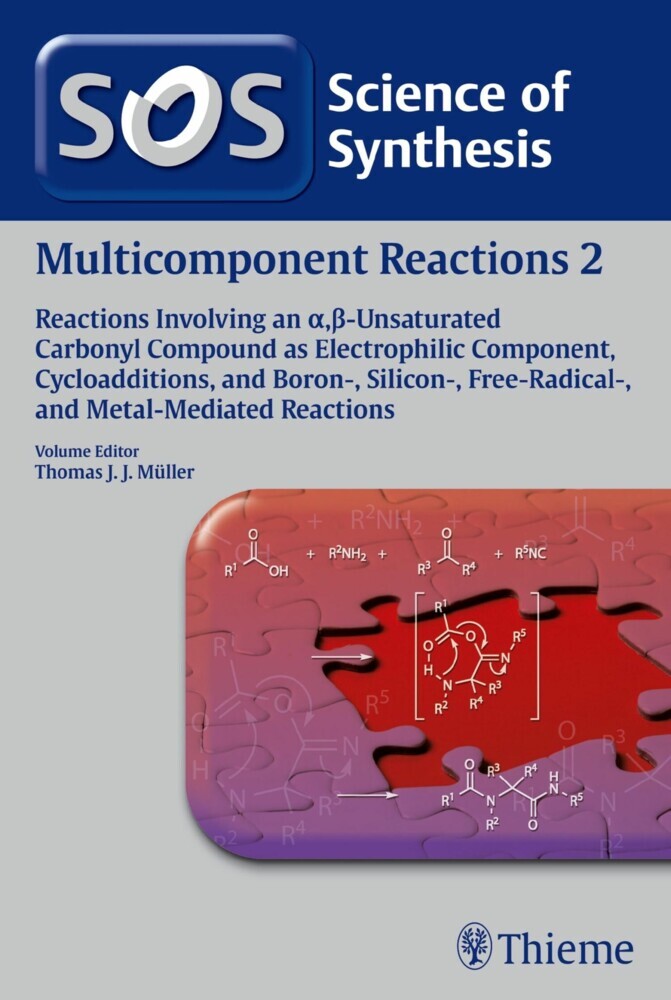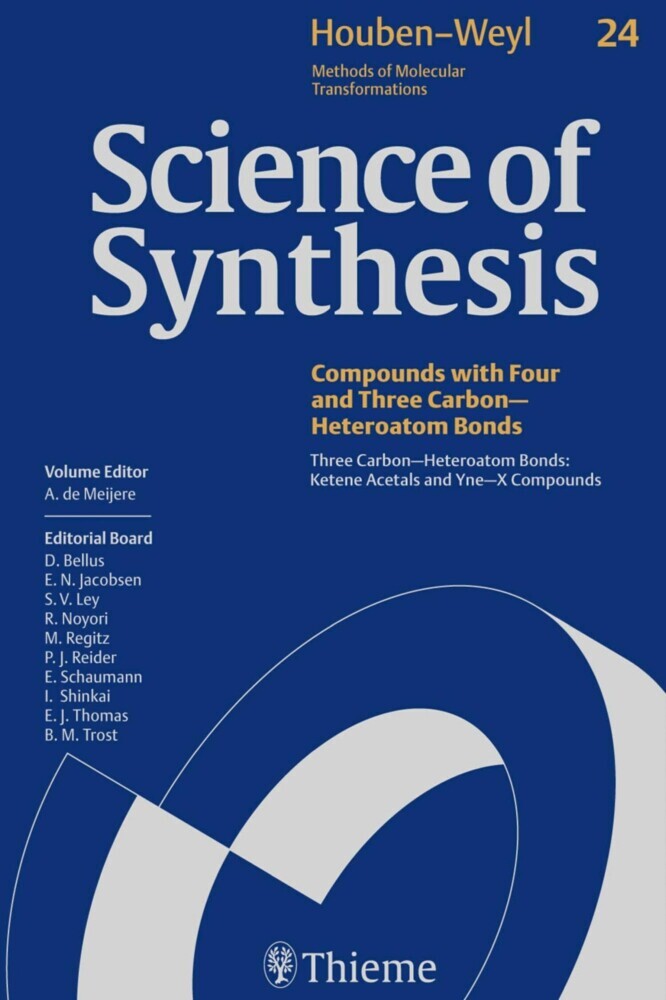Science of Synthesis: Catalytic Transformations via C-H Activation Vol. 1
The reference work Science of Synthesis: Catalytic Transformations via C-H Activation covers the state of the art in C-H activation chemistry. Experts in the field present the best synthetic methods including typical or general experimental procedures. As such, this two volume set can serve as both a basis for the practical application of the techniques discussed, and as an educational resource to lay the foundations for future research.
Volume 1 concerns the formation of C-C bonds by both arene and hetarene C-H activation. For the arenes the material is subdivided into arylation (using palladium(0), palladium(II)/palladium(IV), palladium(II), and ruthenium(II) catalysts), vinylation (using various palladium and ruthenium(III) catalysts), and alkylation (using various metal catalysts in combination with either functionalized alkanes or alkenes). For the hetarenes, the related coupling strategies are covered as a single topic using a variety of metal catalysts and coupling partners.
1;Science of Synthesis;1 2;Title Page;6 3;Copyright;8 4;Preface;9 5;Abstracts;13 6;Catalytic Transformations via C-H Activation;19 7;Table of Contents;21 8;Introduction;27 9;1.1 C-C Bond Formation by Arene C-H Activation;31 9.1;1.1.1 Arylation Using a Palladium(0) Catalyst;31 9.1.1;1.1.1.1 Intramolecular C-H Arylation;34 9.1.1.1;1.1.1.1.1 Synthesis of Polycyclic Arenes;34 9.1.1.1.1;1.1.1.1.1.1 Coupling of Arenes with Haloarenes;34 9.1.1.1.2;1.1.1.1.1.2 Coupling of Arenes with Aryl Sulfonates;40 9.1.1.1.3;1.1.1.1.1.3 Coupling Involving Palladium Migration;41 9.1.1.2;1.1.1.1.2 Synthesis of Biaryls;43 9.1.1.2.1;1.1.1.1.2.1 Coupling of Arenes with Haloarenes;44 9.1.1.3;1.1.1.1.3 Synthesis of Hetarenes;47 9.1.1.3.1;1.1.1.1.3.1 Synthesis of Five-Membered Hetarenes;47 9.1.1.3.1.1;1.1.1.1.3.1.1 Coupling of Arenes with Haloarenes;47 9.1.1.3.1.2;1.1.1.1.3.1.2 Coupling of Arenes with Aryl Sulfonates;58 9.1.1.3.1.3;1.1.1.1.3.1.3 Coupling Involving Palladium Migration;60 9.1.1.3.2;1.1.1.1.3.2 Synthesis of Six- and Seven-Membered Hetarenes;62 9.1.1.3.2.1;1.1.1.1.3.2.1 Coupling of Arenes with Haloarenes;62 9.1.2;1.1.1.2 Intermolecular C-H Arylation;73 9.1.2.1;1.1.1.2.1 Non-Directed C-H Activation;73 9.1.2.1.1;1.1.1.2.1.1 Coupling of Arenes with Haloarenes;73 9.1.2.1.2;1.1.1.2.1.2 Coupling of Arenes with Aryl Sulfonates;82 9.1.2.2;1.1.1.2.2 Directing-Group-Assisted C-H Activation;83 9.1.2.2.1;1.1.1.2.2.1 Coupling of Arenes with Haloarenes;83 9.1.2.2.2;1.1.1.2.2.2 Coupling of Arenes with Aryl Sulfonates;90 9.2;1.1.2 Arylation Using a Palladium(II)/Palladium(IV) Catalyst System;95 9.2.1;1.1.2.1 Chelation-Assisted C(sp2)-H Arylation;96 9.2.1.1;1.1.2.1.1 Reaction Using Diaryliodonium Salts;97 9.2.1.2;1.1.2.1.2 Reaction Using Aryl Halides;102 9.2.1.3;1.1.2.1.3 Reaction Using Arenes;110 9.2.2;1.1.2.2 Non-Chelation-Assisted C(sp2)-H Arylation;113 9.2.2.1;1.1.2.2.1 Reaction Using Organometallic Reagents;113 9.2.2.2;1.1.2.2.2 Reaction Using Aryl Halides;114 9.2.2.3;1.1.2.2.3 Reaction Using Arenes;116 9.2.3;1.1.2.3 Conclusions;116 9.3;1.1.3 Arylation Using a Palladium(II) Catalyst;119 9.3.1;1.1.3.1 Reaction with Organometallic Reagents;119 9.3.1.1;1.1.3.1.1 Reaction with Organotin Reagents;120 9.3.1.2;1.1.3.1.2 Reaction with Organoboron Reagents;122 9.3.1.3;1.1.3.1.3 Reaction with Organosilicon Reagents;136 9.3.2;1.1.3.2 Reaction with Carboxylic Acids by Decarboxylation;139 9.4;1.1.4 Arylation Using a Ruthenium(II) Catalyst;145 9.4.1;1.1.4.1 Factors Affecting Arylation;147 9.4.1.1;1.1.4.1.1 Catalyst Effects;147 9.4.1.1.1;1.1.4.1.1.1 Use of Dimeric Ruthenium(II) Chloride-Benzene or Related Complexes as the Catalyst;147 9.4.1.1.2;1.1.4.1.1.2 Use of Dimeric Ruthenium(II) Chloride-p-Cymene as the Catalyst;149 9.4.1.1.3;1.1.4.1.1.3 Use of Ruthenium(III) Chloride Hydrate as the Catalyst;150 9.4.1.1.4;1.1.4.1.1.4 Use of Ruthenium(II) Carboxylate-p-Cymene Complexes as the Catalyst;151 9.4.1.1.5;1.1.4.1.1.5 Use of Ruthenium(II)-Alkylidene Complexes as the Catalyst;154 9.4.1.1.6;1.1.4.1.1.6 Use of Ruthenium(II)-Alkenylphosphine Complexes as the Catalyst;155 9.4.1.1.7;1.1.4.1.1.7 Use of Ruthenium/Cerium(IV) Oxide as the Catalyst;155 9.4.1.2;1.1.4.1.2 Ligand Effects;156 9.4.1.3;1.1.4.1.3 Additive Effects;157 9.4.1.3.1;1.1.4.1.3.1 Use of Phosphine Oxides as the Additive;157 9.4.1.3.2;1.1.4.1.3.2 Use of Potassium Acetate as the Additive;158 9.4.1.3.3;1.1.4.1.3.3 Use of Potassium Pivalate as the Additive;160 9.4.1.3.4;1.1.4.1.3.4 Use of Potassium Adamantane-1-carboxylate as the Additive;161 9.4.1.3.5;1.1.4.1.3.5 Use of Potassium Mesitylenecarboxylate as the Additive;163 9.4.1.4;1.1.4.1.4 Leaving Group Effects;166 9.4.1.4.1;1.1.4.1.4.1 Use of Iodide as the Leaving Group;166 9.4.1.4.2;1.1.4.1.4.2 Use of Bromide as the Leaving Group;167 9.4.1.4.3;1.1.4.1.4.3 Use of Chloride as the Leaving Group;167 9.4.1.4.4;1.1.4.1.4.4 Use of 4-Toluenesulfonate as the Leaving Group;167 9.4.1.5;1.1.4.1.5 Solvent Effects;170 9.4.1.5.1;1.1.4.1.5.1 Use of Arenes as the Solvent;170 9.4.1.5.
Yu, Jin-Quan
| ISBN | 9783131766816 |
|---|---|
| Artikelnummer | 9783131766816 |
| Medientyp | E-Book - ePUB |
| Copyrightjahr | 2016 |
| Verlag | Georg Thieme Verlag KG |
| Umfang | 524 Seiten |
| Sprache | Englisch |
| Kopierschutz | Digitales Wasserzeichen |

